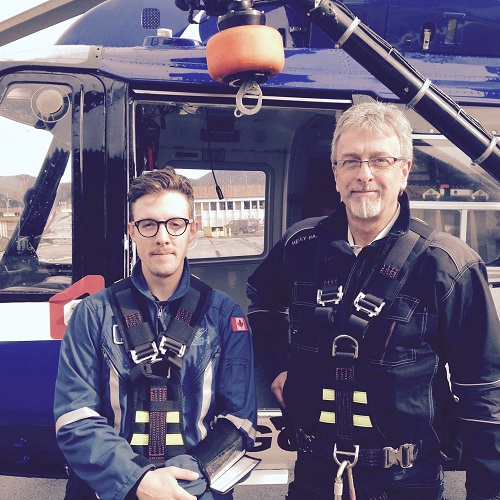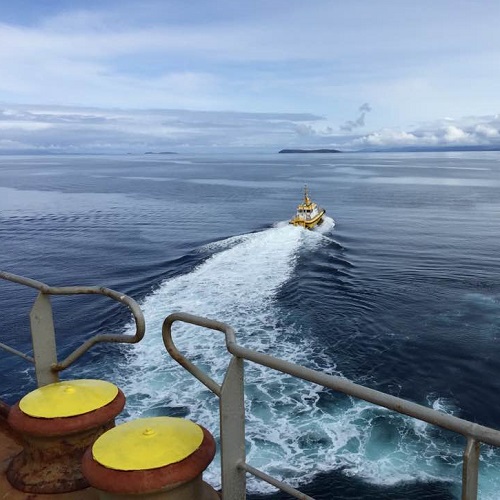Welcome to "Captain's Orders and Pilot"s Advice."
Pre-Sail Checks
Pre-Sailing Checks
It is human nature to take things for granted. Many people have assumed that their boats were seaworthy because it was, “good last time we used it”, so let ‘er go, and away they went. Is this you?
What if something happened? Something changed along the way? Are you prepared? Did you check everything before departing?
Did you follow a thorough pre-sail check list? Let’s break it down.
Years at sea have proven time and again that things will go wrong, usually at the worst of times. The primary reasons for this have been, adverse weather, deficient equipment and maintenance, all the usual suspects in maritime incidents and disasters. Coupled with some bad decisions, a chain of events takes shape.
So how do we prevent that from happening? Can we avoid an incident with complete confidence? Nothing is 100% but we can and must practice good risk mitigation, it is no less important in Seymour arm than it is 200 miles offshore.
Every captain concerns themselves with the seaworthiness of his vessel and the environment it must endure, on a constant basis. He will do regular inspections and analysis, whether It's new, has been a proven platform for years, or it is new to him. Nothing is ever taken for granted.
He knows that his vessel must be 100% seaworthy, it is a life support system that he and his crew depend on. When they leave the dock, their vessel, is not unlike a spaceship venturing into a hostile universe, that does not support human life. To a lesser, but equally important extent, your day on the lake is not any different. Things change, things go wrong, and things break. If the chain of events leading to your misfortune is severe enough and the conditions unfavourable, things will become very bad, very quick. Are you prepared to depart? Do you know what to do in when things happen unexpectedly?
The following is a list of things you should be doing every time you sail. We will assume that your are licensed with experience on a power driven vessel. Your vessel is not connected to shore power. (refer to your owners manual for the specific safety information of attaching and disconnecting shore power.)
CHECK THE WEATHER FORECAST- good weather becomes bad weather.
• No Smoking
• Find out if anyone else joining you, has a license to operate your boat and make them your next in charge, should anything happen to you while out enjoying your day. Give them a brief rundown on any systems and information they will need. This is best done while you are doing your pre-sail checks
• On approach, take notice of the trim. Is it listing? Down by the head or stern? If it isn’t trimmed as you would expect it to be, you may be taking on water.
• Boarding your vessel, take notice of the condition of the anchor rhode/mooring lines, are they worn or otherwise showing fatigue?
• Are the decks in good order? Everything in its place?
• Check the location and condition of all the life saving gear. Life rings, rescue lines, flares, fire extinguishers, and any other items your vessel may be equipped with.
• Look for any pooling water where it is not expected on deck.
• Ensure all lockers and cabinets are properly equipped with i.e., bailer, provisions, warm set of clothes for all onboard, impellors, spark plugs, fuses, filters batteries for flashlights etc.) in working order and secured.
• Ensure you have enough fluids for all your boats mechanical systems onboard, ideally twice their capacities.
• Check the toolbox is onboard and not missing any tools.
• Check the flashlight(s) are in working order.
• Prior to inspecting the engine space, do not engage the battery power.
• Open the engine compartment and immediately try to detect if any gas, hydrogen or other dangerous fumes are present. If so, do not engage the DC (battery power) determine the source of the fumes and repair immediately as necessary. If repairs can not be made and require a technician, you must wait until it is fixed. Your engine compartment is an explosion/fire waiting to happen. Treat it accordingly.
• Look for loose or damaged wiring. Naked leads and that your batteries are secure, and all connections are in good order.
• Once you determine that the electrical is in good order and there are no gas, hydrogen or other dangerous fumes, listen for the ingress (dripping) of water and inspect the water level in the bilge. Is it high? Is it contaminated?
• Check the bilge pumps are working properly and float switches are functioning.
• Now engage DC power and start your blowers. While you allow the blowers to do their job, check all the fluids in your engine compartment, (oil, coolant, power steering etc.) check the belts and all thru-hull connection are in good order. Opening any valves required to operate your vessel. Check again for leaks!
• Check that the radio is working, transmit a “radio check” on the local vhf channel. Avoid using vhf 16 except for emergencies. If the radio doesn’t seem to be working, check all connections and try again. Often the microphones get stuck ‘open’ and this will make it seem that the radio doesn’t work.
• Check that the compass and navigation electronics are working properly and calibrated.
• Turn the ignition key to the on position, taking note of the gauges. Are the fuel level gauge(s) working? DO YOU HAVE ENOUGH FUEL? Use the 1/3 rule. - 1/3 to get there 1/3 to get home and the other third sparingly! Your gauges may not be accurate.
• Once the recommend time for the blowers has ben reached, with the compartment open, start your engine. Twin engines start one at a time, listen for any unusual sounds.
• While your engine(s) warm up, take constant readings of the gauges. Are they all working properly? Are the readings good?
• Check the navigation lights, and deck lighting. Do not assume you will not need them if you are not planning to be out after daylight.
• Brief your passengers on the use and location of their flotation devices.
• Set some basic rules about conduct on your boat, don’t be a jerk, This is especially important when you have children onboard!
Having completed this check list, you have done all you can do to assess your boats seaworthiness and the days weather. You can relax knowing that you and your passengers are prepared.
Remember to follow all navigational aids, collision and local regulations and always be mindful of your fellow boaters. Should anything go wrong along the way, remember Laketow is just a call away and if you are a member, you’ll have even more peace of mind!
Comments? Questions? Critique?
Join us on our Facebook page to comment question or critique our blogs. While you are there, like and follow us for all our thought provoking insights and advice on baoting.
Click here to go to our Facebook Page
numbers
By the numbers
41
Years of
Maritime Excperience
Maritime Excperience
1500+
Vessels
served on
served on
#1
Safety on the water
can spare no expense
can spare no expense







